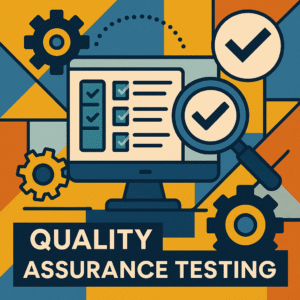Container Management Platform and Cloud Computing – Are they Made for Each other?
Report from Forrester highlights an interesting fact of how an enterprise may go away with using large, complex, and costly private cloud software suites. In fact, the enterprises may revisit their cloud strategy and look for alternatives that include and integrate PaaS capabilities, cloud management, and container support.
If you haven’t noticed it yet, check out some of the cloud computing firms and the new flavor added by them – Container as a Service[CaaS]? Amazon EC2 Container Service, Microsoft Azure, Google Container Engine are some of the leading firms that are flexing with their CaaS offerings.

Is Cloud and Container Management a deadly combo?
While at one hand Cloud comes with the benefits of low-cost, anytime connectivity, no hardware maintenance the container management is loaded with Security, portability and easy to launch features. So, the two have the potential of disrupting the industry, let’s take a closer look at what they could offer –
Container Database Improves Performance
Many tech enthusiasts prefer Docker containers as the method of running a database for cloud-based applications. The reason for the choice is indeed its
- Improved performance – As the container stresses on faster deployments, convenience, they could improve I/O performance
- Reduction in maintenance cost – Experts believe that containerization could reduce the infrastructure cost considerably, and it also reduces the Time-to-market of a product.
- Less operation overhead – How often we buy/renew the OS license for VMs, with containerization that could be reduced.
Easier management – The icing on the cake is the way a new application could be spun with Docker container as the method of running a database.
Cloud Containers Offer Portability
How many times do we create an environment? Development, Test, UAT and live environment? However, with Cloud containers, the parameters set in one environment could be replicated to other seamlessly saving time and effort. Containers by its nature are the isolated slice of the host computer that shares the host kernel and even its binaries and libraries but comes handy when debugging an issue.
Pressing Hard on Cloud Container Security
While Cloud had faced the brunt of declaring it as a vulnerable software, containers or replicating modules are adding to its misery! One quick resolution recommended is to run containers within a VM. However, that has its flaws. A container like Dockers along with copy-on-write filesystem could use mount points as read-only points to limit containers from reading each other’s data.
Using the cloud architecture and container technology, enterprises could standardize and streamline the efforts, reduce technical glitches and enhance productivity. Thanks to Technology and Innovation to make our life simpler!
LIKE THIS POST SHARE IT WITH YOUR FRIENDS
RECENT POSTS
Guides

How To Select a Regression Testing Automation Tool For Web Applications
Regression testing is an essential component in a web application development cycle. However, it’s often a time-consuming and tedious task in the QA process.

Switching from Manual to Automated QA Testing
Do you or your team currently test manually and trying to break into test automation? In this article, we outline how can small QA teams make transition from manual to codeless testing to full fledged automated testing.

Why you can’t ignore test planning in agile?
An agile development process seems too dynamic to have a test plan. Most organisations with agile, specially startups, don’t take the documented approach for testing. So, are they losing on something?

Challenges of testing Single Page Applications with Selenium
Single-page web applications are popular for their ability to improve the user experience. Except, test automation for Single-page apps can be difficult and time-consuming. We’ll discuss how you can have a steady quality control without burning time and effort.

Why is Codeless Test Automation better than Conventional Test Automation?
Testing is important for quality user experience. Being an integral part of Software Development Life Cycle (SDLC), it is necessary that testing has speed, efficiency and flexibility. But in agile development methodology, testing could be mechanical, routine and time-consuming.





